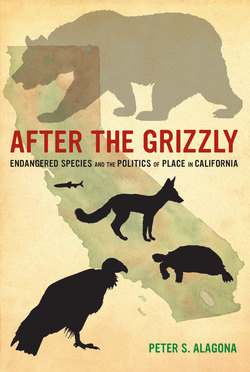After the Grizzly

Реклама. ООО «ЛитРес», ИНН: 7719571260.
Оглавление
Peter S. Alagona. After the Grizzly
Отрывок из книги
AFTER THE GRIZZLY
The publisher also gratefully acknowledges the generous support of the Humanities Endowment Fund of the University of California Press Foundation.
.....
Grinnell’s commitment to the aesthetic and intrinsic values of wild animals did not prevent him from killing them in large numbers. He was a prodigious collector who bagged thousands of animals during his lifetime and facilitated the slaughter of tens of thousands more. He offered his motives, his credentials, and the uses to which he put the remains as justification for this carnage. According to him, animals that were killed for food or profit only benefited a few people for a few days, but animals preserved in a museum would benefit society for centuries. He encouraged amateur naturalists to avoid collecting eggs and to watch birds with opera glasses instead of killing them. But he chastised professional naturalists who shot pictures when they should have been shooting guns and argued with animal welfare advocates who called hunting inhumane or questioned the need for further scientific collecting of rare species. In 1915 he published a manifesto on the subject, “Conserve the Collector,” which argued that future biological research would depend on scientists having open access to vertebrate specimens, even in protected parks and reserves.31
Grinnell also lectured Bryant on the subject. As part of his job at the California Division of Fish and Game, Bryant handled requests for permits to collect specimens of protected species. He balked when his friend and fellow Grinnell protégé, Loye Miller, requested a permit to collect a white-tailed kite. Miller was a respected young researcher who would go on to found the Department of Life Sciences at UCLA. When Grinnell heard about the delay, he intervened on Miller’s behalf. “I do not believe that the species is anywhere near the point of extermination,” he wrote in a letter to Bryant. “There cannot be less than 100 of the birds alive in the State. . . . Specimens of the species should be preserved for science; and they can be without, I believe, jeopardizing the existence of the species.”32
.....